No Products in the Cart
What is Dog Bloat or GDV? Symptoms, Causes, Costs, and Photos.
Hi Jope's squad !
Dog bloat and gastric dilatation-volvulus (GDV) are dangerous conditions that can be painful and even fatal. Many pet owners dread the signs and causes of bloat—and for good reason! The symptoms can evolve in just a few hours or even minutes, and they are life-threatening.
So, if you’re the proud pet parent of a loving large-breed or giant-breed dog, read on to learn how canine bloat and GDV can be avoided and treated. We also include photos to help you recognize the signs and know what to expect from your dog’s bloat treatment.
- What does dog bloat mean, and how does it cause GDV?
- Which dog breeds are the most prone to bloat and GDV?
- Large dog breeds are especially at risk
- The risks and symptoms of dog bloat and GDV
- What dog bloat or GDV signs should you watch out for?
- Dog bloat pictures
- How can you prevent dog bloat?
- How much does it cost to treat your dog for GDV?
- What is the best treatment for dog bloat and GDV?
- Bloat and GDV: What are the risks and possible complications for my dog?
- Why is it so important to prevent dog bloat?
- How does stomach tacking (gastropexy) prevent dog bloat?
What does dog bloat mean, and how does it cause GDV?
Bloat (gastric dilatation) starts when a dog’s stomach is distended. But why does bloat happen? There are many causes, including a dog’s food, water, or air entering the stomach because the dog has been gasping for breath.
When your dog’s stomach dilates, it can become painful. The stomach can press against their other internal organs. In addition, bloat can sometimes cause the stomach to turn in on itself. Veterinarians usually call this turning of the stomach GDV, which stands for gastric dilatation and volvulus. When a dog’s stomach turns, it usually twists in a clockwise direction.
As a consequence of GDV, the dog’s esophagus gets blocked. Nothing can get in or out. As a result, one of the first signs you’ll notice is your dog trying to throw up but no vomit comes out.
Which dog breeds are the most prone to bloat and GDV?
Generally, the following dog breeds have bloat and GDV the most often:
- Akita inu.
- Basset hound.
- German shepherd.
- Boxer.
- Great Dane*.
- Irish wolfhound.
- Labrador retriever.
- Saint Bernard.
- Irish setter.
Sex or gender is not a factor in dog bloat. In fact, male and female dogs are equally likely to exhibit these dangerous symptoms.
Studies showed that large and giant dogs are at higher risk of presenting with bloat at least once in their lives.
*Note: If you’re the proud parent of a majestic great Dane, you should know that over 30% of great Danes experience bloat at some point in their lives. Again, male and female great Danes are equally affected.
Are larger dog breeds especially at risk?
If you have a large-breed dog, you should especially look out for signs of dog bloat. Let’s walk through a typical example of what could happen.
First, suppose your large-breed dog is acting strangely after eating, after drinking, or after exercising. Second, you see that their abdomen is swollen and hard. In this case, you should call your veterinarian immediately. If your dog is trying to vomit but nothing is coming out, their stomach has likely turned because of GDV. And since GDV is life-threatening, you should bring your dog to an emergency veterinary hospital right away. In the event, you notice any of these symptoms during regular business hours, you can call your veterinarian. They will either see you right away or refer you to an emergency center immediately. On the other hand, suppose you were to observe these signs after regular business hours. In that case, you could call your veterinarian, and their phone system will usually give you the number for the closest emergency practice. Alternatively, you can locate the nearest emergency practice using Google Maps.
The risks and symptoms of dog bloat and GDV
Many risks are linked to GDV. They include—but are not limited to—stomach necrosis due to impaired blood circulation. Necrosis of the stomach can cause sepsis and death.
Another consequence of dog bloat is a blockage of the vena cava, a large vein that carries blood from the entire back of the dog’s body. This blockage causes the dog to go into shock. In turn, shock causes the organs not to get enough blood supply. If this symptom is left untreated, it can be fatal.
Clearly, dog bloat and gastric dilatation-volvulus can be extremely serious for you and your pet. But why are these conditions common? And what can you do to avoid dog bloat and GDV? Below, we explain the key signs of bloat, the best treatments, and which dog breeds are prone to this health emergency. At Jope, we believe in helping pet owners understand what’s best for their furry friends.
What dog bloat or GDV signs should you watch out for?
Not all dogs show the same signs of bloat or gastric dilatation and volvulus. However, around meal time, you should keep an eye out for the most common symptoms:
- Agitation and anxiety
- Failed attempts to vomit
- A distended abdomen, whether symmetrical or asymmetrical
- Pale mucous membranes (like the lips and gums)
- An unusually fast heart rate and a weak pulse
- Abnormally apathetic or passive behavior from your dog
If you have a large-breed dog, contact your veterinarian immediately after noticing any of these behaviors or physical signs. They could indicate dog bloat, and it’s critical to act fast.
Dog bloat pictures
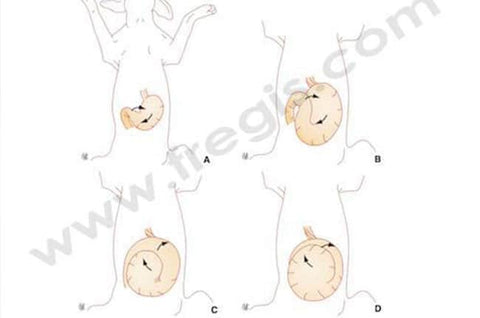
Diagram 1 - A diagram explaining stomach dilatation-torsion in pets with dog bloat (© Fregis, 2010)
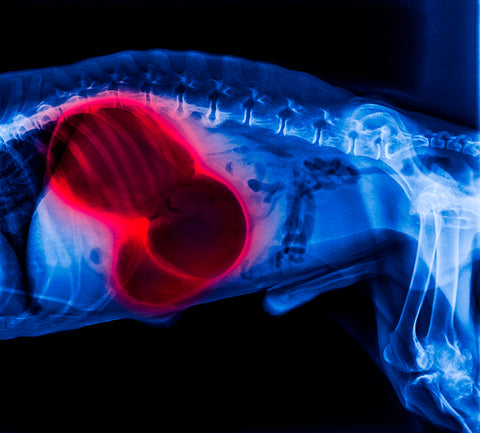
Picture 2 - An x-ray showing a dog’s dilated stomach (the black round shape in the center). An examination later diagnosed gastric dilatation-volvulus (GDV)
How can you prevent dog bloat?
Because this condition is life-threatening, taking all the possible precautions is essential. Follow these tips to prevent dog bloat in your home.
- Avoid large meals by dividing your dog’s food into several meals daily.
- If necessary, allow your veterinarian to perform surgery, tacking your dog’s stomach.
- Avoid stressful events or intense activity for your dog before and after eating. Keep your dog calm for two hours before meals and four hours after meals.
- If your dog tends to eat without chewing, stay nearby during meals. You can also feed them smaller quantities over 10 to 15 minutes. Some special bowl help to make the meal last longer.
- Don’t elevate your dog's food and water bowls. (Only one study has found that elevating dog food bowls could increase the risk of GDV article. However, we would err on the side of caution.)
Unfortunately, even if you take all the necessary measures to prevent dog bloat or GDV, your dog could still have these dangerous symptoms. For that reason, we want you to be prepared and understand that you are not to blame if this occurs with your pup. So, in case your dog experiences either of these conditions, we share some of the treatment steps your veterinarian might discuss with you.
How much does it cost to treat your dog for GDV?
As you will see in the next paragraph, treatment for GDV is intensive. It requires that your veterinary team perform many exams and treatments. In general, it also includes supportive care, anesthesia, surgery, and post-operative management.
The cost of GDV treatment for an uncomplicated case can range from $2,500 to $7,500.
Unfortunately, GDV is often complicated, and the price can rise significantly. Sadly, in the case of a poor prognosis, owners should consider euthanasia.
What is the best treatment for dog bloat and GDV?
If you encounter the dangerous symptoms of dog bloat or GDV, seek medical attention right away. First, your veterinary team will probably follow these three steps:
- Using IV fluids and different medications to stabilize your dog
- Decompressing your dog’s stomach so that it can deflate and be ready for surgery
- Performing surgery once your dog is stable
These steps all happen as quickly as possible since bloat and GDV can develop quickly into a deadly outcome. When arriving at the hospital, dogs with bloat are taken immediately into care by the medical team. Bloat symptoms are usually so severe that a trained team can make the proper diagnosis in just a few seconds. Dilatation-torsion syndrome is a real emergency. That means stabilizing your pet is the treatment priority!
The emergency veterinary team will immediately put your dog on IV fluids. These fluids keep your dog hydrated, and they can include different electrolyte solutions and medications. The main goal here is to remedy the extreme distress caused by dog bloat, called systemic shock. Also, your dog will receive immediate pain relief using morphine or other analgesics. If your dog is in respiratory distress, an oxygen mask will be used at this stage of treatment.
Releasing trapped stomach gas to treat dog bloat
At the same time, the emergency veterinary team will start procedures to decompress your dog’s bloated stomach. The purpose of this treatment is to deflate the stomach, stopping it from compressing the other organs and the vena cava. A trocar (a type of large needle or catheter) is then placed into the stomach, through the skin, for decompression. As a result, the accumulated gas will escape. This process is called gastrocentesis. Although you might cringe reading this paragraph, it’s important to understand this treatment. The release of trapped stomach gas will relieve your dog, and it isn’t painful.
Next, the medical team will give your dog an anesthetic right away. This step is important, making sure your pet doesn’t feel any pain during the next stage of bloat treatment. The team will run a tube through your dog’s mouth, into their throat (esophagus) and stomach. The goal of this treatment is to empty the stomach as much as possible. Then, the team can flush out the stomach.
What happens during surgery for dog bloat ?
The final step of dog bloat treatment is surgery. Ideally, this procedure happens as soon as the stomach has emptied. However, because your dog must be stable before surgery, they might receive intensive care first. Then, a few hours later, a veterinarian will perform the bloat surgery.
During the surgery, the medical team will look for signs of necrosis in the abdominal organs. Any of these signs could mean a worse prognosis. During the bloat surgery procedure, your dog's stomach will be repositioned and anchored. The stomach is anchored on the right side of the abdomen to avoid any recurrence of bloat symptoms. This treatment is called gastropexy. Additionally, if your dog’s medical team finds any signs of stomach necrosis, the surgeon will remove the affected area. This procedure is called gastrectomy.
Sometimes, the surgeon can open up your dog's stomach during surgery to empty it if they couldn’t do so before surgery or if a foreign object is in the way. This surgical opening and emptying of the stomach is called gastrotomy.
Do dogs with bloat have to be put down or euthanized?
Unfortunately, if too much of a dog’s stomach has necrotized, their prognosis becomes hopeless. In these cases, euthanasia is the only option.
After the stomach, one of the most commonly affected organs is the spleen. It may follow the stomach’s lead and twist. When this happens, blood clots often develop in the spleen's vessels. So, in these cases, removal of the spleen is necessary. This process is called a splenectomy. The good news is that your dog can live a normal life without a spleen.
Finally, did you know the heart can also be affected by dog bloat or GDV? As a result of these symptoms, your dog may also experience abnormal heart rhythms (cardiac arrhythmias). This symptom affects about 40% of dogs with spleen problems that require spleen removal. Heart problems can be fatal, too, and they require special treatment.
What to expect after surgery for dog bloat and GDV?
Depending on your dog’s general condition, if they have no postoperative complications, they’ll be able to go home two to four days after surgery.
From the start of bloat treatment, your veterinary team will have consistently monitored your dog’s health. This careful oversight includes ECG, blood pressure, temperature, and respiratory function monitoring. As we’ve seen, cardiac arrhythmias are also a frequent complication. For these reasons, at least 48 hours of monitoring is necessary after surgery for dog bloat.
As we’ve explained, dog bloat and gastric dilation-volvulus are severe conditions. First, they can affect many essential organs. Second, as a caring pet parent, you probably want to understand the possible risks and complications associated with this surgery. Below, we explain what you need to know.
Bloat and GDV: What are the risks and possible complications for my dog?
Like any other surgery, surgery for dog bloat is not free of risks, and potential complications can occur. First, although rare, pets can die during anesthesia. The less stable a pet is going into surgery, the higher this risk. For this reason, sometimes dogs with bloat are stabilized in intensive care before surgery. Also, the good news for pet owners is that modern, safe anesthetic protocols and monitoring devices (like ECG, pulse oximetry, and blood pressure monitoring) all minimize the risks of surgery for dog bloat.
Second, infection is also worth mentioning. Infection after surgery is rare these days, however. Veterinarians use strict sterile techniques during any procedure, as well as antibiotics.
On the other hand, cardiac arrhythmias are a more common complication. And don’t be surprised if these arrhythmias occur several days after an operation to treat dog bloat. Monitoring dogs after surgery is crucial since this complication can be fatal if it persists . For that reason, your veterinary team will keep your dog in the hospital for 48 to 72 hours of observation after surgery.
Other dangers of dog bloat treatment and surgery
Unsurprisingly, if multiple organs are affected and compromised, coagulation disorders and even death can often occur after surgery for dog bloat. Generally, animals with stomach necrosis do much worse than animals with minimal trauma, who were brought to the hospital quickly after the first signs of bloat or GDV. Therefore, acting fast is essential!
On the one hand, gastropexy is successful in 95% of dog bloat cases where this treatment is used. Moreover, detachment of the stomach only occurs in 5% of cases. On the other hand, an infrequent recurrence of bloat is possible despite this treatment. When dog bloat symptoms come back, they’re often due to a functional defect of the stomach muscle. That defect will require medication. Also, when bloat recurs, its clinical signs are similar to stomach dilatation-torsion syndrome. But the stomach doesn’t twist in these cases, making the condition less severe.
Why is it so important to prevent dog bloat?
We know we’ve shared a lot of information that can be overwhelming. However, we hope you now understand that if your dog has bloat or GDV ( See Picture 3), they could show a broad range of symptoms. And it’s hard to predict whether your dog will develop complications after surgery. So, although dog bloat or GDV can’t be completely prevented, we highly recommend taking steps to prevent dog bloat.
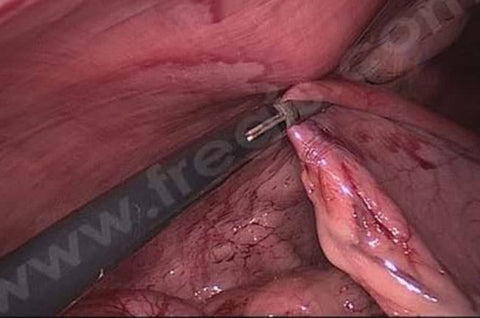
Picture 3 - Intraoperative view of dilatation with torsion of the stomach. You can notice significant damage to the stomach and signs of necrosis due to dog bloat.

Picture 4 - Preventive gastric fixation (gastropexy) under laparoscopy is a minimally invasive technique. It prevents the risk of stomach dilatation-torsion during your dog's life. (Fregis)
Previously, we mentioned a procedure that tacks a dog's stomach to their abdomen to prevent bloat ( See Picture 4). This treatment can happen either before bloat or GDV symptoms occur as a preventative measure or during bloat or GDV surgery as a treatment. If you’re wondering how exactly stomach tacking prevents dog bloat, we provide a more detailed description in the next section.
How does stomach tacking (gastropexy) prevent dog bloat?
If you have a large-breed or giant dog who’s prone to bloat, preventive surgery is highly recommended. This treatment can minimize the risk of stomach dilatation-volvulus, especially for great Danes.
The more traditional approach to stomach tacking is an open abdomen surgery. Nowadays, tacking can be performed laparoscopically through two small incisions with the help of a camera.
Regardless of the technique, the operation involves suturing the stomach wall to the abdominal wall near a dog’s 13th rib. Your dog’s surgeon will make incisions into the stomach and the abdominal walls before stitching them together. These incisions allow the attachment to hold naturally once the stitches have dissolved.
Your veterinarian can perform this surgery when your puppy is as young as six months old. You can also choose to have this treatment done when your dog gets neutered or spayed, and laparotomy is usually the best approach. This preventative stomach tacking presents few risks. It also requires less anesthetic time and shorter hospitalization than surgery for stomach dilatation-torsion syndrome. Plus, the costs are significantly lower.
How should you care for your dog after bloat surgery?
If your dog experiences bloat or GDV and needs surgery, your medical team will give you detailed explanations of the right care after their discharge. Since the necessary care after dog bloat or GDV surgery varies case by case, we won’t go into too much detail here. However, the most important thing to remember is that once your dog is home from surgery, the medical team will give you the best recommendations for their postoperative care.
Generally, in severe cases of dog bloat, your pet will spend 48 to 72 hours in the hospital, under monitoring. During that time, the veterinary team will regularly examine your dog. They’ll check for cardiac arrhythmias, signs of coagulation disorders, and other possible complications. Also, your vet team will continue to give your dog IV fluids, pain medications, and other medications. These 72 hours are critical!
Slowly, your dog will be allowed to drink water and eat their food again during this time. Usually, they will have to go 24 hours without eating. This fasting period will be even longer if your dog had a very severe case of bloat or GDV.
Throughout this time, you’ll get regular updates on your dog's health. The first few hours after bloat surgery are critical. If your dog recovers from bloat, when they’re ready to go home, your veterinarian will give you a detailed report. But of course, you can always reach your veterinary hospital by phone if you have any questions or problems.
So, we know that the first 72 hours after bloat surgery are critical. But what can you expect from the overall, long-term prognosis for dog bloat?
What is the prognosis of dog bloat?
In the case of bloat or gastric dilation-volvulus, timing is critical. Indeed, when treated quickly and with all the necessary intensive care, dogs with bloat will survive in 90% of cases. However, if a surgeon notices necrosis on part of the stomach, the bloat survival rate drops to about 50%. To prevent this condition, we hope you have a clearer picture of what causes dog bloat, what signs to watch for, and what to expect from your dog’s treatment.
At Jope, our goal is to guide you on a deep dive into your dog’s conditions. If you have questions, please feel free to email us.
Disclaimer: We hope this article helps you understand the important precautions to prevent dog bloat and GDV. And if your dog experiences signs of bloat or GDV, act quickly. Call your veterinary emergency team immediately.






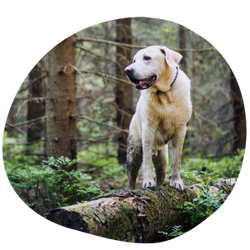
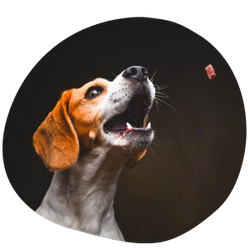

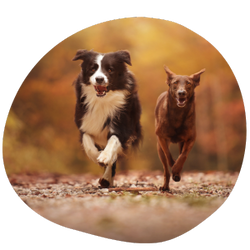
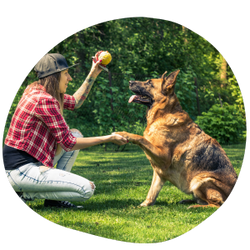

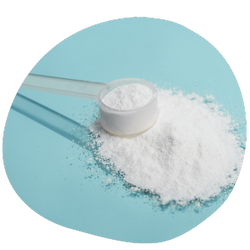
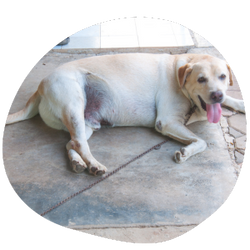
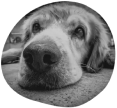
Leave a comment